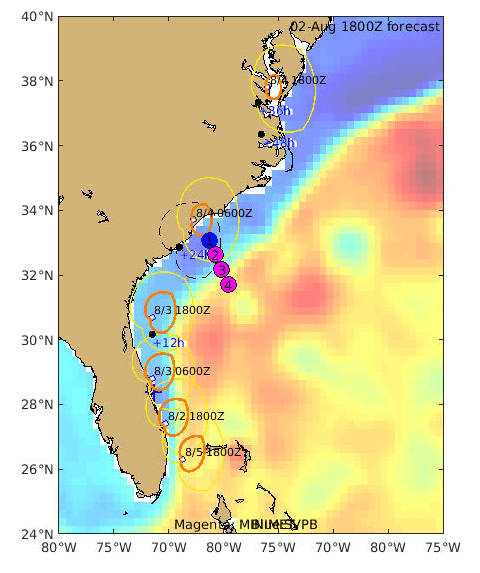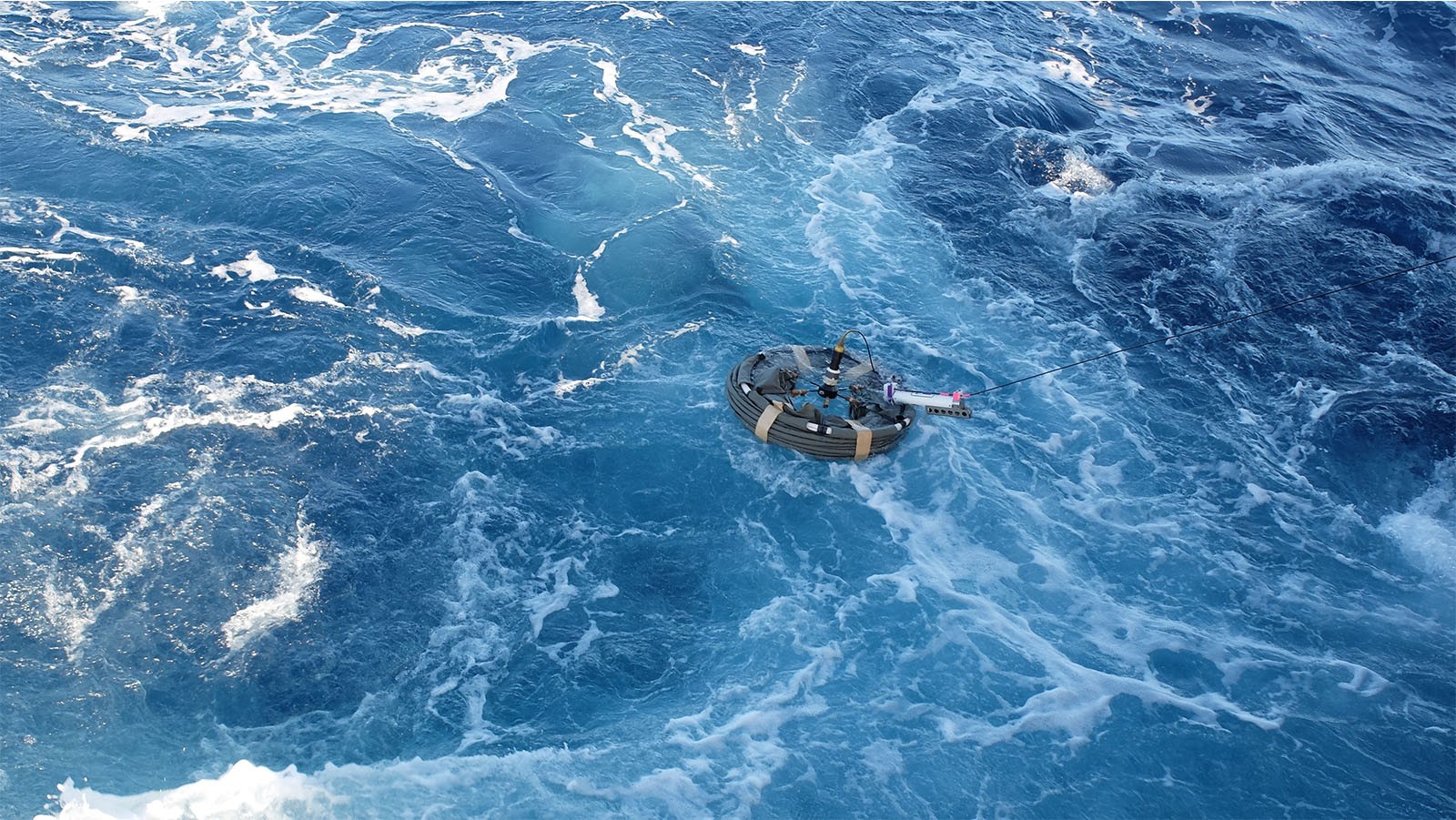AOML scientists partnered with the U.S. Air Force 53rd Reconnaissance Squadron “Hurricane Hunters” to deploy eight drifting buoys in advance of Tropical Storm Isaias on August 3, 2020 off the Carolina coast, in collaboration with the National Weather Service (NWS), National Hurricane Center (NHC), and Scripps Institution of Oceanography’s Lagrangian Drifter Laboratory.
These drifters provide critical data for improving weather forecasts. The eight drifters sent out ahead of Isaias will give the National Weather Service a better understanding how strong winds interact with the Gulf Stream system during wave formation and air-sea interactions.
NOAA’s Global Drifter Program, supported by the Global Ocean Monitoring and Observing Program, maintains an array of over 800 drifting buoys that measure air pressure over the ocean and send these data to satellites passing overhead, which then transmit the data within an hour to the forecasters.
Collected data include measurements of barometric pressure, sea surface temperature, ocean currents, wind speed and direction, and directional wave spectra. These data are now going onto the Global Telecommunications System for operational use by the National Weather Service.
These drifter deployments augment the aircraft data collected from NOAA’s hurricane hunter aircraft that have flown into Isaias as it approached the U.S. Read about AOML’s support of data collected during these flights in AOML news updates.
According to the National Hurricane Center, Tropical Storm Isaias is forecast to reach a category 1 strength before making landfall.
Dependent on appropriate conditions, AOML will also deploy a U.S. Navy glider in the Florida Current on August 4, 2020, which will be later recovered off the Carolinas by the Southeast Coastal Ocean Observing Regional Association.

For the latest information about tropical cyclones and other weather systems, visit the NOAA National Weather Service National Hurricane Center.
For information on numerical prediction of tropical cyclones, visit the NOAA National Centers for Environmental Prediction Environmental Modeling Center.
To learn more about drifters and NOAA’s Global Ocean Observing System visit AOML’s Global Drifter Program web page.
